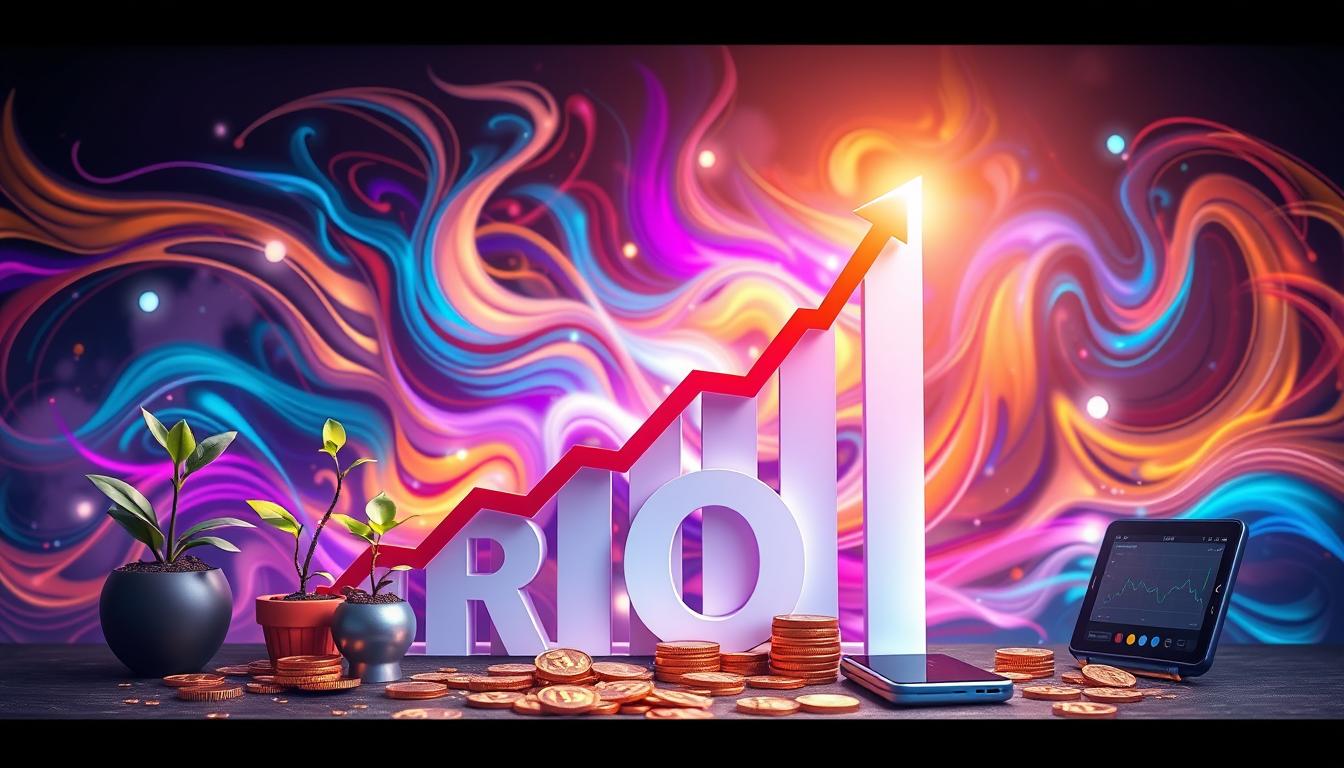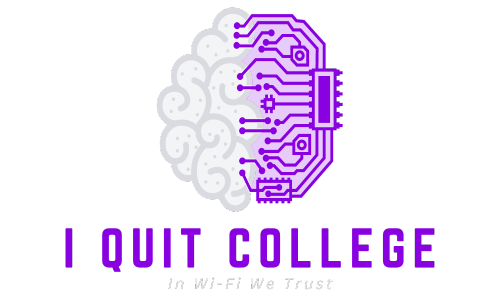Welcome to our in-depth exploration of consumer behavior and the psychology behind it. As market researchers, we understand the importance of delving into the minds of consumers to gain valuable insights that can drive successful marketing strategies and product development. In this article, we will dive into the fascinating world of consumer psychology, uncovering the factors that influence buying behavior, decision-making processes, and brand loyalty. By understanding consumer behavior, businesses can tailor their efforts to connect with their target audience on a deeper level, ultimately driving sales and market success.
Key Takeaways:
- Consumer behavior is influenced by psychological factors and emotions.
- Social influence, such as peer recommendations and online reviews, plays a significant role in consumer decisions.
- Simplicity in product offerings and the creation of a sense of urgency or scarcity can impact consumer behavior.
- Understanding the decision-making process helps businesses provide the right information at each stage to guide consumers towards a favorable decision.
- Market research is essential in uncovering key insights about consumer behavior and helping businesses gain a competitive edge.
The Importance of Emotions in Consumer Behavior
Consumers are not purely rational beings, and their purchasing decisions are often driven by emotions. When it comes to buying, emotions can play a significant role, sometimes even trumping other factors like taste or affordability. Happiness, nostalgia, excitement, and desire are just a few of the emotions that can influence consumer choices.
For example, imagine a person walking by a bakery and catching the aroma of freshly baked bread. Instantly, they are transported back to their childhood, reminded of warm family meals and the comfort of home. Even though they may not have had any intention of buying bread before, the emotional connection evokes a desire to make a purchase.
Understanding the role of emotions in consumer behavior is essential for businesses looking to develop products and create marketing campaigns that elicit positive emotional responses. By tapping into consumers’ emotions, brands can establish deeper connections and loyalty, driving repeat purchases and long-term customer relationships.
“Emotion is one critical element that can set a brand apart and create a lasting impression in consumers’ minds.”
The Role of Emotional Branding
Emotional branding is a marketing strategy that aims to create an emotional connection between consumers and a brand. Instead of relying solely on rational benefits or features, emotional branding taps into consumers’ desires and aspirations, creating a sense of identity and belonging.
Brands like Coca-Cola and Apple have successfully used emotional branding to establish strong connections with their audience. Coca-Cola, for example, aims to create a sense of happiness and togetherness through its iconic advertisements featuring joyful and diverse groups of people. Apple, on the other hand, focuses on the emotions of excitement, intrigue, and empowerment through its sleek and innovative product designs.
The Power of Emotional Advertising
Emotional advertising is another tool businesses can use to leverage consumer emotions. By creating ads that evoke specific emotions, brands can capture attention and leave a lasting impact. Emotional advertising is particularly effective in capturing consumers’ attention in an overcrowded marketplace.
Take the example of Dove’s “Real Beauty” campaign. By challenging conventional beauty standards and celebrating diverse body types, Dove was able to evoke emotions of empowerment, self-acceptance, and inclusivity. The campaign not only resonated with their target audience, but it also sparked conversations and garnered widespread media attention.
| Emotional Advertising Examples | Emotional Impact |
|---|---|
| Dove’s “Real Beauty” campaign | Elicited emotions of empowerment, self-acceptance, and inclusivity |
| Nike’s “Just Do It” campaign | Ignited emotions of motivation, determination, and inspiration |
| Google’s “Year in Search” videos | Elicited emotions of nostalgia, reflection, and hope |
Emotions play a vital role in consumer behavior, and businesses that understand and harness this power can create more impactful marketing strategies. By appealing to consumers’ emotions, brands can forge deeper connections, inspire loyalty, and drive purchasing decisions.
The Power of Social Influence in Consumer Behavior
Social influence plays a crucial role in shaping consumer behavior. People are naturally influenced by the opinions, behaviors, and recommendations of others, whether it’s their friends, family, or online influencers. This phenomenon has a significant impact on the way consumers make purchasing decisions.
Businesses have recognized the power of social influence and have found ways to leverage it effectively in their marketing strategies. One of the key tactics is the use of social proof, which involves showcasing customer reviews and testimonials. When potential customers see positive feedback from their peers, it serves as a powerful validation and builds trust in the brand or product.
Online reviews, in particular, hold great sway over consumer behavior. According to a study by BrightLocal, 86% of consumers read online reviews before making a purchase. Positive reviews can sway the decision-making process, while negative reviews can deter potential buyers. Businesses that actively monitor and respond to online reviews can influence and shape consumer perceptions.
Another way businesses tap into social influence is by creating a sense of community around their brand. By fostering a community of loyal customers who share positive experiences, businesses encourage word-of-mouth recommendations, further amplifying their social influence. This can lead to a ripple effect, as consumers trust the opinions of their peers and are more likely to make purchasing decisions based on their recommendations.
In summary, social influence, driven by peer recommendations and online reviews, holds tremendous power in shaping consumer behavior. Businesses that understand and harness this power can effectively persuade potential customers, build trust, and ultimately drive sales.
The Role of Simplicity in Consumer Behavior
When it comes to consumer behavior, simplicity plays a vital role in the decision-making process. With an overwhelming number of choices available in the market, businesses that simplify their offerings have a higher chance of success. By streamlining product options and providing clear and straightforward packaging and branding, companies can appeal to consumers who are seeking simplicity and ease in their buying decisions.
Offering a limited selection of products not only reduces the cognitive load on consumers but also helps them make decisions more efficiently. Research has shown that when faced with too many choices, consumers experience decision fatigue, leading to dissatisfaction and even decision paralysis. By presenting a smaller range of carefully curated options, businesses can alleviate this burden and guide consumers towards making a purchase.
In addition to product selection, the simplicity of the consumer experience is also crucial. From the user interface of an e-commerce website to the checkout process in a retail store, businesses should strive to provide a seamless and intuitive experience. Investing in user-friendly interfaces, clear navigation, and efficient payment systems can significantly impact consumer behavior positively.
Furthermore, simplicity extends beyond the purchase journey to the overall brand experience. Brands that communicate their message concisely and consistently are more likely to resonate with consumers. By distilling complex ideas into easily understandable and memorable concepts, businesses can establish a strong brand identity that captivates their target audience.
The Power of Simplicity in Product Development
Simplicity also plays a crucial role in product development. By focusing on creating intuitive and user-friendly products, businesses can enhance consumer satisfaction and loyalty. Switching from complex features and functionalities to streamlined designs that prioritize ease of use can make a significant difference in consumer adoption and brand perception.
For example, Apple has successfully captured the market by designing products that prioritize simplicity and user experience. The clean and minimalist designs of their smartphones, laptops, and other devices have resonated with consumers around the world, driving their brand loyalty and market success.
“Simplicity is the ultimate sophistication.” – Leonardo da Vinci
In conclusion, simplicity is a powerful factor in consumer behavior and product development. By simplifying the decision-making process, offering a limited selection of products, providing a seamless consumer experience, and focusing on user-friendly product designs, businesses can effectively meet the needs of their target audience and stand out in a competitive market.
| Impact of Simplicity in Consumer Behavior and Product Development | Benefits |
|---|---|
| Streamlining product selection | – Reduces decision fatigue – Guides consumers towards making a purchase |
| Providing a user-friendly consumer experience | – Enhances satisfaction – Improves brand perception |
| Focusing on simplicity in product design | – Enhances user adoption – Drives brand loyalty |
Creating a Sense of Urgency and Scarcity
In today’s fast-paced world, consumers are constantly bombarded with options and decisions. As a result, businesses need to find ways to cut through the noise and capture their audience’s attention. One effective strategy is to create a sense of urgency and scarcity.
When consumers feel a sense of urgency, they are more likely to make a purchase. Urgency taps into the fear of missing out (FOMO) and triggers a response to act quickly to avoid losing an opportunity. By highlighting limited-time promotions or limited availability of a product, businesses can create this sense of urgency and motivate consumers to take action.
For example, online retailers often use countdown timers to indicate that a sale or discount will end soon. This visual cue reinforces the urgent need to make a purchase before the opportunity disappears. Additionally, limited stock notifications or a fixed number of units available for purchase can create a sense of scarcity, further driving consumers to make a decision.
By leveraging urgency and scarcity, businesses can tap into consumer behavior and influence their purchase decisions. However, it’s important to use these tactics ethically and transparently, ensuring that the sense of urgency and scarcity is genuine and not fabricated.
In conclusion, creating a sense of urgency and scarcity is a powerful tool that businesses can use to drive consumer behavior and increase sales. By effectively highlighting limited-time promotions and limited availability, businesses can tap into the psychology behind purchase decisions and motivate consumers to take action.
| Benefits of Creating Urgency and Scarcity: | Examples |
|---|---|
| 1. Increased Conversion Rates: By creating a sense of urgency and scarcity, businesses can push consumers to make quicker purchase decisions, resulting in higher conversion rates. | Countdown timers on e-commerce websites, limited-time offers with clear end dates |
| 2. Enhanced Brand Value: An effective use of urgency and scarcity can enhance brand value and create a perception of exclusivity among consumers. | Limited edition product releases, invitation-only sales |
| 3. Increased Sales Velocity: Urgency and scarcity can create a sense of momentum and excitement, leading to higher sales velocity for businesses. | Flash sales, limited stock notifications |
Understanding the Decision-Making Process
Consumers today go through a complex decision-making process when making purchase decisions. This process involves several stages, including problem recognition, information search, evaluation of alternatives, and the final purchase decision. Each stage plays a critical role in shaping consumer behavior and ultimately influencing their choices.
During the problem recognition stage, consumers identify a need or a problem that requires a solution. This recognition can be triggered by various factors, such as an unmet desire, a specific need, or an external influence. For example, a consumer might realize the need for a new smartphone when their current device becomes outdated or starts malfunctioning.
Once the problem is recognized, consumers embark on an information search to gather relevant data and evaluate available options. They seek out information from various sources, both online and offline, to make informed decisions. These sources can include personal networks, online reviews, expert opinions, and product specifications. The abundance of information available today empowers consumers to make well-informed choices.
After gathering information, consumers enter the evaluation of alternatives stage. They compare different products or brands based on specific criteria, such as price, quality, features, and brand reputation. Consumers weigh the pros and cons of each option, considering factors like affordability, reliability, and overall value for money.
The final stage of the decision-making process is the purchase decision. At this point, consumers have evaluated alternative options and are ready to make a choice. The purchase decision is influenced by various factors, including personal preferences, brand loyalty, price sensitivity, and perceived value. Ultimately, consumers choose the product or brand that they believe will best satisfy their needs and deliver the desired benefits.
Motivation, Perception, and Learning in the Decision-Making Process
The decision-making process is not solely determined by rational thought. Motivation, perception, and learning also play crucial roles in shaping consumer behavior. Motivation refers to the internal and external forces that drive individuals to take specific actions. In the context of purchasing decisions, motivation can be influenced by needs, desires, and aspirations.
Perception refers to the way individuals interpret and make sense of information. It involves the selection, organization, and interpretation of sensory stimuli, shaping consumers’ understanding and evaluation of products and brands. Perception can be influenced by factors such as personal biases, cultural norms, and past experiences.
Learning is another significant factor in the decision-making process. Consumers learn from their past experiences and adjust their future behavior based on those experiences. They acquire knowledge and skills that guide their decision-making, forming preferences and developing brand loyalty over time.
Understanding the decision-making process and the factors that influence it is crucial for businesses. By gaining insights into consumers’ motivations, perceptions, and learning processes, businesses can tailor their marketing efforts to align with consumer needs and preferences.
| Stage | Description |
|---|---|
| Problem Recognition | Consumers identify a need or problem that requires a solution |
| Information Search | Consumers gather information from various sources to evaluate options |
| Evaluation of Alternatives | Consumers compare and assess different options based on specific criteria |
| Purchase Decision | Consumers make a final choice and commit to a purchase |
Conclusion
The study of consumer behavior provides invaluable insights for businesses seeking to enhance their product development and marketing strategies. Understanding the psychological drivers behind consumer behavior enables businesses to create products and campaigns that effectively resonate with their target audience.
By considering the role of emotions, social influences, simplicity, and urgency, businesses can tailor their marketing efforts to meet the preferences and motivations of consumers. This understanding allows for the development of strategies that drive consumer engagement, loyalty, and ultimately, purchase decisions.
Market research plays a crucial role in uncovering these insights, offering businesses a competitive advantage in the market. The systematic gathering and analysis of consumer data empowers businesses to make informed decisions and effectively address consumer needs and desires.
FAQ
How do market researchers use psychological insights to understand consumer behavior?
Market researchers use psychological insights to gain a deeper understanding of consumer behavior, including their motivations, preferences, and decision-making processes. By studying consumer psychology, researchers can identify trends, detect patterns, and uncover the underlying factors that drive consumer behavior. This knowledge helps businesses improve their product development and marketing strategies.
Are emotions important in consumer behavior?
Yes, emotions play a significant role in consumer behavior. Purchasing decisions are often driven by emotions rather than logic. For example, consumers may choose a particular brand or product because it makes them feel happy or nostalgic, even if other factors like taste or affordability are not as significant. Understanding the role of emotions in consumer behavior helps businesses develop products and marketing campaigns that elicit positive emotional responses and drive sales.
How does social influence impact consumer decisions?
Social influence, such as peer recommendations and online reviews, greatly impacts consumer decisions. Consumers are influenced by the opinions and behaviors of others, including friends, family, and online influencers. Businesses can leverage social proof, such as customer reviews and testimonials, to persuade potential customers to make a purchase. Additionally, creating a sense of community around a brand can encourage consumers to share positive experiences and influence others’ buying decisions.
How does simplicity affect consumer behavior?
Consumers are often overwhelmed by choice, and businesses that simplify the decision-making process are more likely to succeed. Offering a limited selection of products and using clear and simple packaging and branding can appeal to consumers. Simplifying the consumer experience helps businesses meet the needs of their target audience and stand out in a crowded market.
How can businesses create a sense of urgency and scarcity?
Creating a sense of urgency or scarcity can influence consumer behavior. Limited-time promotions or emphasizing the limited availability of a product can create this sense of urgency. Businesses can use these tactics to motivate consumers to make a purchase and drive sales.
What is the decision-making process in consumer behavior?
Consumers go through a series of stages when making purchasing decisions. These stages include problem recognition, information search, evaluation of alternatives, and the final purchase decision. The decision-making process is influenced by factors such as motivation, perception, and learning. Understanding this process helps businesses optimize their marketing efforts and provide the right information at each stage to guide consumers towards a favorable decision.
How do psychological insights help businesses improve their marketing strategies?
The psychology of consumer behavior is a powerful tool for businesses looking to improve their product development and marketing strategies. By understanding the emotions, social influences, simplicity, and urgency that drive consumer behavior, businesses can develop products and marketing campaigns that resonate with their target audience. Market researchers play a critical role in uncovering key insights about consumer behavior and helping businesses gain a competitive edge in the market.
Source Links
- https://www.linkedin.com/pulse/psychology-consumer-behavior-acesdigitale-mr
- https://www.mckinsey.com/capabilities/growth-marketing-and-sales/our-insights/understanding-and-shaping-consumer-behavior-in-the-next-normal
- https://www.linkedin.com/pulse/psychology-consumer-behavior-understanding-buying-decisions






